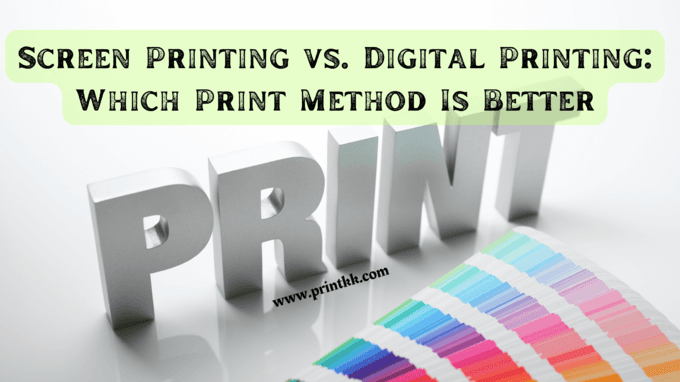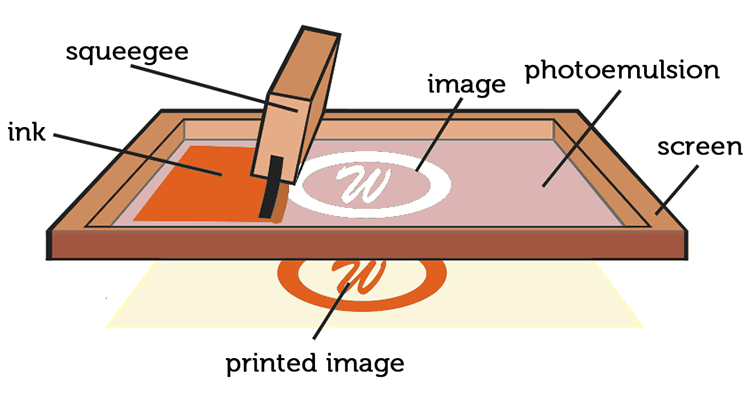Getting The Tx Tees To Work
Getting The Tx Tees To Work
Blog Article
Some Known Questions About Tx Tees.
Table of ContentsThe smart Trick of Tx Tees That Nobody is Talking AboutTx Tees Fundamentals ExplainedAll about Tx TeesUnknown Facts About Tx TeesThe Greatest Guide To Tx TeesThe smart Trick of Tx Tees That Nobody is Talking AboutA Biased View of Tx Tees
Add up other expenses, like the number of utilities it takes to run the shop and the expense of ink and solution per design. Take the print listed below.The emulsion needs to only be a couple of cents considering that you 'd only require to layer one screen for this work. How much should you bill per t-shirt to make an earnings? Typically, printers attempt to make up to 45% earnings on a print work. Right here's a table to aid you establish that: complete expense per item percent of preferred earnings as a decimal (example:.25 or.45) revenue made per thing per work Currently let's discuss the productivity of DTF.

With DTF, you can publish a handful of tee shirts, or just one. Both screen printing and DTF have their particular niches in the globe.
A Biased View of Tx Tees
The most effective way to recognize? Ask about and see what printing shop like yours are doing. screen printing shop. Try both out and see which you like much better
When you're selecting what kind of printing approach to use for printing your artwork styles on your garments, it is very important that you know the distinctions between these two methods so you can optimize outcomes while lessening prices. Screen printing is the most typically utilized strategy for printing designs on fabrics.
DTG printing is also referred to as place or straight to garment printing because it publishes just what is needed instead of making a screen as screen printers do. https://www.openlearning.com/u/russellcostello-sb08ce/. Screen printing works by display filler squeegee display printing ink screen mesh display, after that moving the picture to garment using warmth and/or stress
The DTG printer uses special dye-sublimation inks that are used into a pre-designed image by a digital printing system. The inks come to be component of the textile, permitting vivid shades and extraordinary information. It's likewise referred to as spot or direct to garment printing due to the fact that it publishes just what is needed instead of making a screen as display printers do.
What Does Tx Tees Do?
It's much faster - you can publish a fullcolor photo in minutes, as opposed to hours for display printing. Second, there's no established up time or prices involved - you can publish any style you like, without needing to create a display first. Third, there's no waste - since display printers screen print one design each time, they need to screen each color independently.
The paper is really pricey and can just be used once. Once it's published on, it needs to be thrown out. - The first acquisition rate is reduced than the ahead of time financial investment of DTG printers- You can print multi-color styles one screen at a time rather than needing to print each color separately like DTG printing.

Tx Tees Can Be Fun For Anyone
Instead of utilizing display mesh as display printers do, dye sublimation printers use laser modern technology to transfer your pictures onto garments or paper. A warmth procedure transfers the dye from its solid-state straight right into the gas phase which in turn merges it onto textile substratums when they are rapidly heated up to high temperature levels under high stress.
Sublimation printing is environment-friendly. It uses less water than screenprinting, and due to the fact that it does not entail making use of hazardous solvents, it's risk-free for all types of garments. The color sublimation inks are likewise odorless when healed, unlike display printers that use dangerous chemicals during the display printing procedure that leave an unpleasant odor.
They likewise conserve cash on pricey devices like direct exposure units given that dye sublimation printers don't check my blog require a UV exposure system or a flash cure stove that is typically used in screen printing (custom t-shirt design). What is direct to garment printing (DTG Printing)? DTG printing is an electronic screenprinting procedure that publishes directly onto fabric using specialized inkjet printers
The smart Trick of Tx Tees That Nobody is Talking About
DTG printing uses numerous benefits over conventional screenprinting, including the capacity to publish photographic quality photos, better shade vibrancy, and the ability to print layouts on darker materials. DTG printers function by heating the textile ink until it becomes a gas. The gas after that penetrates the fabric, bonding with the fibers to develop an irreversible print.

Screen printers simply prepare their display after that begin printing up until they run out of product or ink.- There is a broad variety of knowledgeable display printers around the world, which can be valuable for novices. - It's a slower procedure - screen printers typically need to wait on the ink to dry before they can print the next color- Screen printers need manual work, so there's a greater understanding contour and it takes longer to produce a high-grade design- Display printing isn't as precise as DTG printing, so you might get some "bleeding" of colors from one component of the photo onto an additional otherwise done effectively.
Indicators on Tx Tees You Need To Know
However, as opposed to utilizing screen mesh as display printers do, color sublimation printers utilize laser modern technology to transfer your photos onto garments or paper. A warm procedure transfers the color from its solid-state straight into the gas phase which subsequently fuses it onto material substratums when they are rapidly heated to heats under high stress.
Sublimation printing is green. It uses less water than screenprinting, and due to the fact that it doesn't include making use of harmful solvents, it's risk-free for all sorts of garments. The dye sublimation inks are also unsmelling when healed, unlike display printers that make use of harmful chemicals throughout the display printing process that leave behind an undesirable odor.
They additionally conserve cash on pricey equipment like direct exposure units because color sublimation printers don't require a UV exposure system or a flash treatment oven that is typically used in display printing. What is straight to garment printing (DTG Printing)? DTG printing is a digital screenprinting process that publishes straight onto textile utilizing specialized inkjet printers.
The Facts About Tx Tees Revealed
DTG printing provides numerous benefits over traditional screenprinting, including the capacity to publish photo high quality images, greater shade vibrancy, and the capability to print designs on darker textiles. DTG printers function by heating up the textile ink until it develops into a gas. The gas after that penetrates the material, bonding with the fibers to produce a permanent print.
Report this page